How to organize a potting shed: 8 space-saving ways to tame tools
A potting shed is a dream garden addition that can quickly descend into chaos – follow these organizing tips to keep things neat
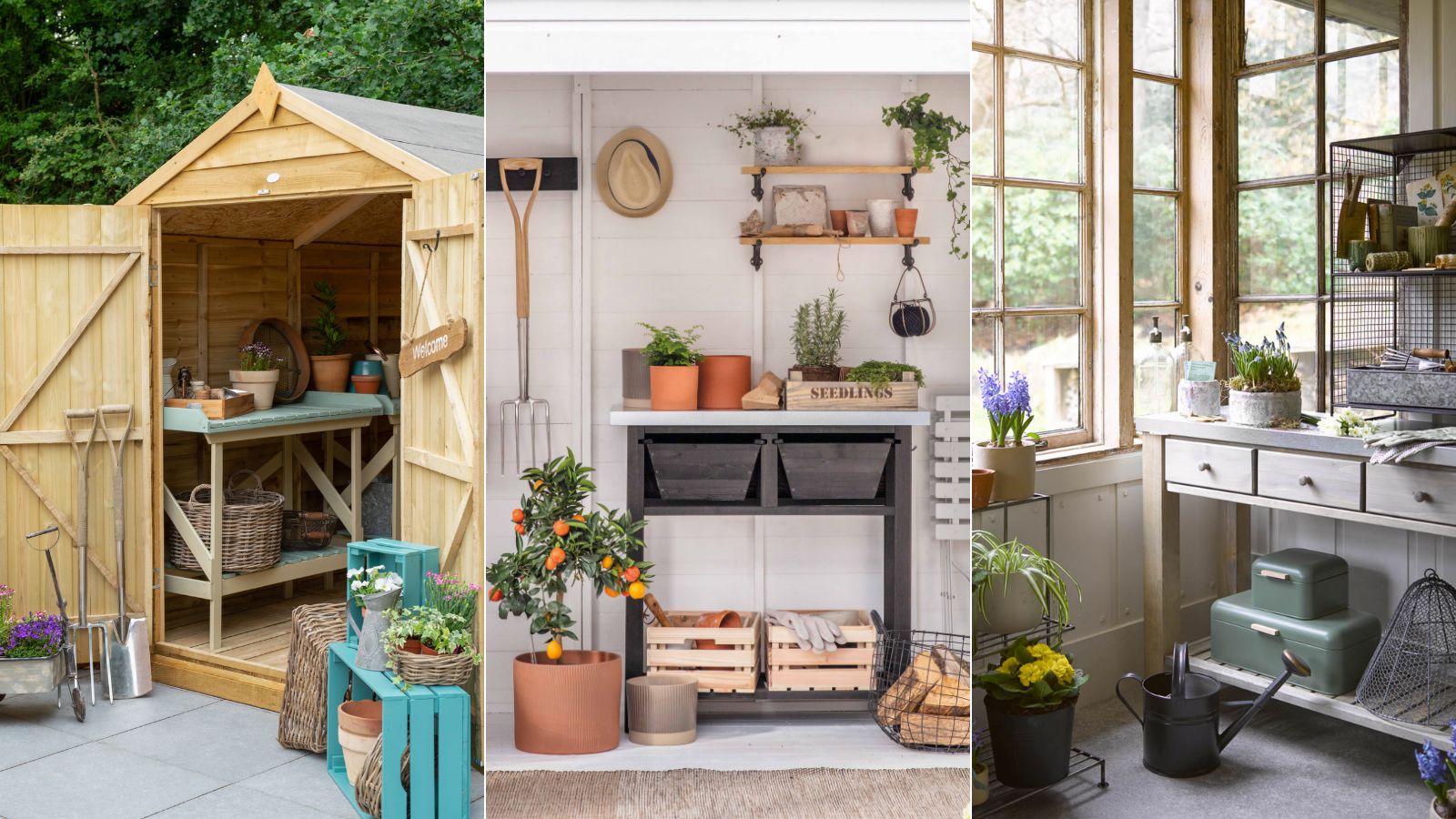

When thinking about how to organize a potting shed, it's a good idea to keep in mind two golden rules of home organizing: accessibility and visibility. Because there's no way you can organize a shed effectively when tools and supplies are out of reach or buried at the bottom of a drawer.
It's also sensible to visualize just how you will be using your potting shed, and what you will need at hand. For instance, what are all the items you need when sowing seeds indoors and transplanting seedlings?
Your potting shed may also double up as a growing space, so perhaps you will require a staging table as well as a potting bench as part of your backyard storage ideas. Taking some time to think about how you will use the space and investing in some storage solutions will make it a joy to use.
Organizing a potting shed
A potting shed should be a soothing space in which to pot, plan, and de-stress. To help you get started (and maintain a beautifully organized shed ideas in the long run) we have rounded up some simple organizing tips for you to try at home.
1. Install deep, sturdy shelves

Put up rows of open shelving above your potting bench, going up as high as possible.
'Think vertical,' agrees Curvin Huber from Missouri-based shed company The Backyard and Beyond. 'The more you can use the vertical space, the more you will be able to fit in. I recommend installing a shelving unit to utilize this space,' Curvin adds.
Store regularly used items on the middle shelves as these will be the easiest to reach. Gardening supplies that are used less frequently can be stored overhead – consider picking up a foldable step ladder, available at Amazon, so everything is easy to access when necessary.
Gardening expert Ryan Farley at LawnStarter reminds us to keep safety in mind when organizing your shelves: 'After a few near-disasters of my own with pots falling from high shelves, I recommend keeping all pots on the floor or on lower shelves in your potting shed,' says Ryan. 'Lots of shelving is the best way I have found to keep things organized without overwhelming a small space, but it is best to keep things like soil and big pots lower so they're more manageable.'
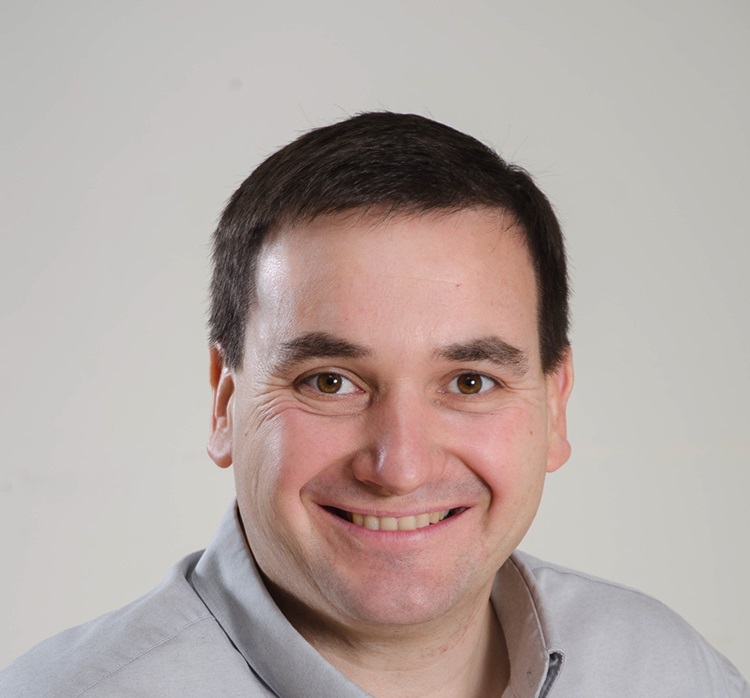
Curvin Huber is the CEO of The Backyard And Beyond, a portable building manufacturer in Missouri. Curvin has years of experience in building sheds, garages, cabins, and animal shelters.
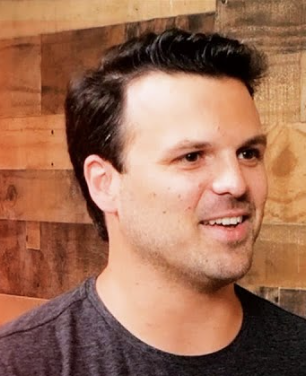
Ryan Farley is the CEO of LawnStarter, a lawn care service founded in 2013 and based in Austin, Texas.
2. Label everything
Labels are an essential when it comes to keeping your potting shed organized – keep it simple and use masking tape and a black marker pen, or purchase a label maker, available at Amazon.
Label your shelves, bins, and even tools, and you'll be much more likely to put everything back where it belongs. Group like-items together into categories and put them in labeled containers (clear bins are great for seeing what's inside, opaque ones will conceal mess).
Labels will make it much easier to create an organizing system, which, as Ryan Farley points out, can make all the difference in a small space: 'I recommend establishing a system for where everything goes and then sticking with that as much as possible. This will help keep things organized, especially if you have a very small potting shed,' he says.
3. Hang shoe organizers
Whether growing vegetables in pots or trying some springtime container gardening ideas, you need plenty of space for all of your tools. Attach a shoe organizer over the back of the door, or hang it directly onto the wall with nails for a space-saving, vertical storage solution that will keep surfaces clutter-free.
This is a brilliant solution for all those smaller gardening tools that are easily misplaced, from scissors and twine to plant labels and dibbers. Opt for a clear shoe organizer so you can see exactly what's inside, or attach labels and clean it out periodically so nothing is forgotten at the bottom of a pouch.
Shop shoe organizers for your tools
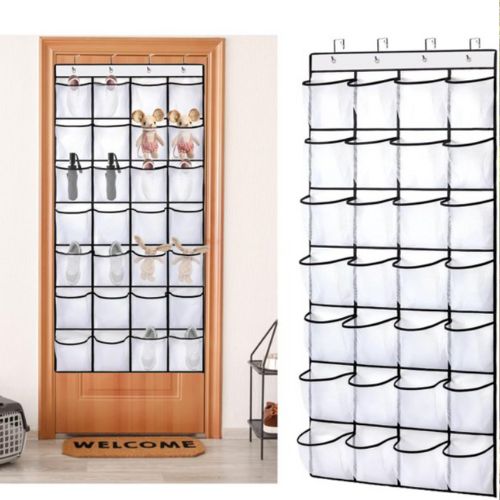
This set of two black and white organizers is made of high-quality, woven fabric that will help to keep air circulating and reduce moisture.
4. Use large bins and containers that stack

Opened bags of soil can get messy, so consider investing in some large bins with lids to keep everything contained. 'Use bins for storing soil, mulch, fertilizer or other types of loose materials. Once you open a bag, dump it into the bin,' says Curvin Huber.
Stackable containers with lids, at Amazon are another of our favorite shed storage ideas as they have a smaller footprint, helping to keep your potting bench clear. Choose containers you really like as they'll add to the overall aesthetic of the space – along with some hanging plants, a radio and so on.
5. Use drying racks for drip trays
With a bit of creative thinking, you'll find that some of your kitchen organizers can be used out in the potting shed – for instance, mug trees can store smaller pots, and drying racks can hold terracotta drip trays.
Find ways to give everything a designated home by repurposing items you have knocking around, and it will make tidying up at the end of the day much easier.
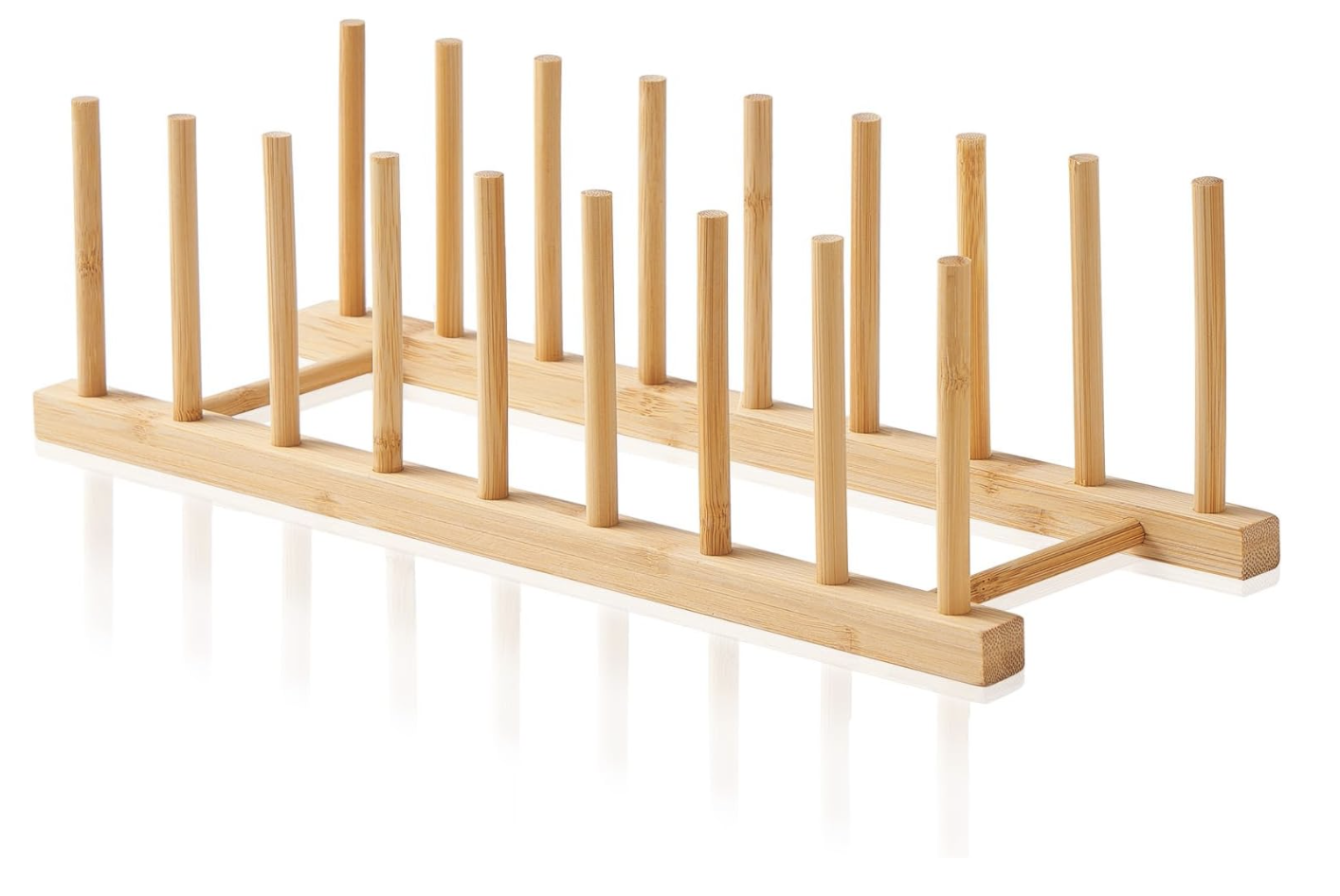
Store drip trays in an inexpensive plate holder, like this one from Amazon, which is made of bamboo, a material that's hard-wearing, natural and easy to care for.
6. Use wall-mounted baskets
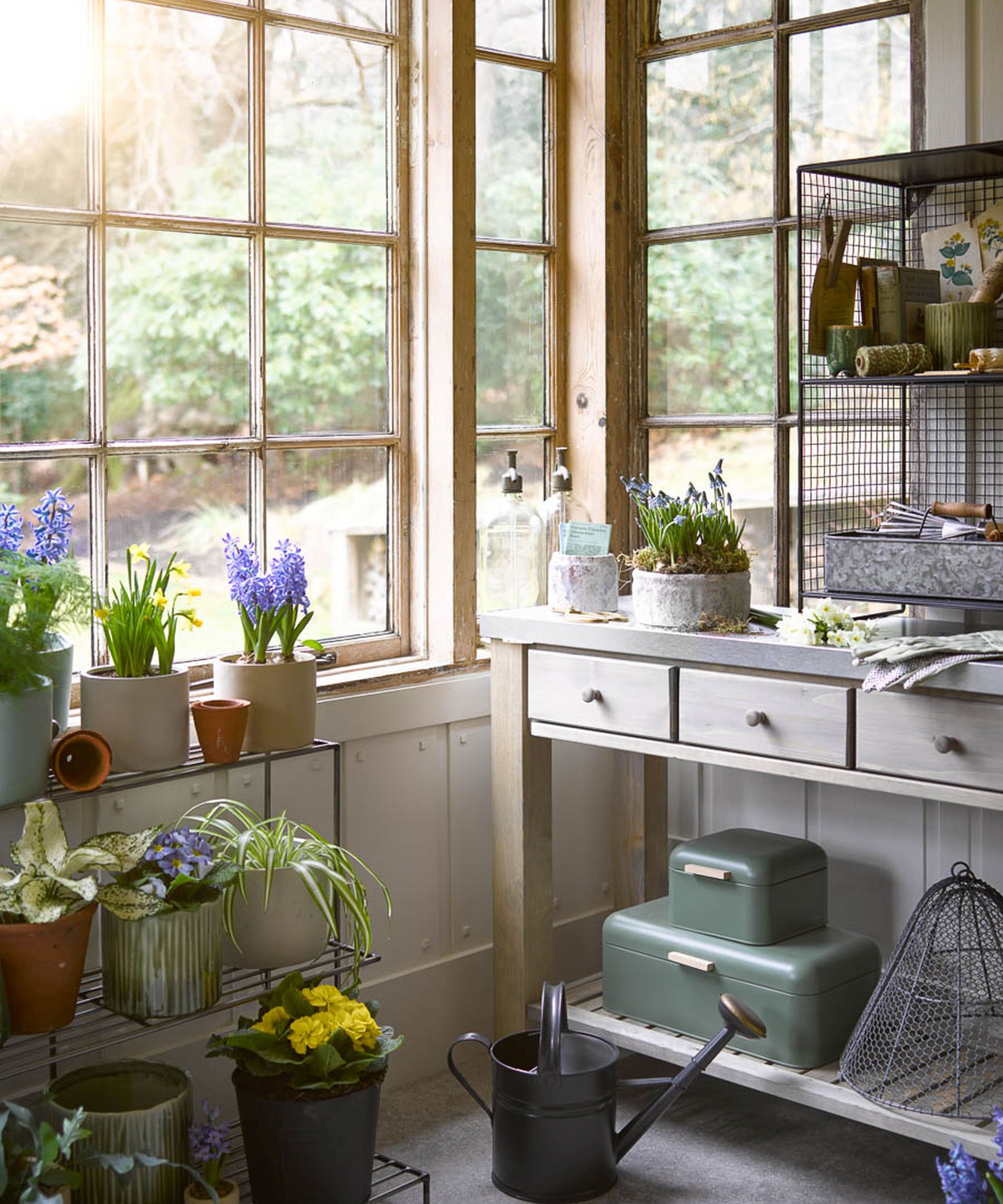
It's a good idea to look at ways to use the walls of your potting shed, such as hanging wall-mounted baskets. Try adding a couple of wall-mounted wire baskets and store like-items in each one, from pots to tools to cleaning equipment.
Baskets on the walls are a particularly good option if you prefer to have all your gardening supplies visible and tend to forget about things when stored away in drawers. You could also use old fruit and vegetable crates, as long as they are strong enough.
7. Use a pegboard and S hooks
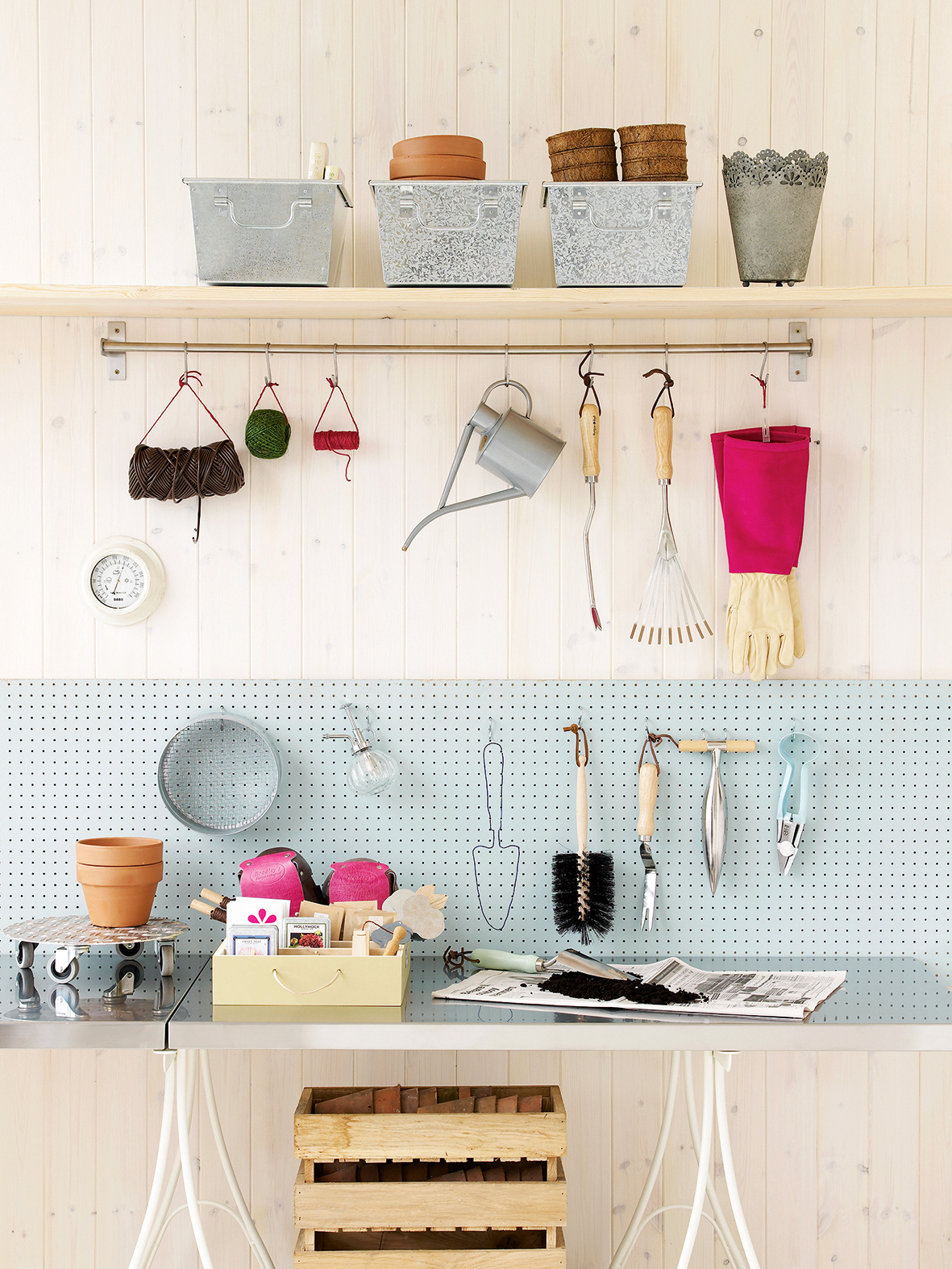
Pegboards are a great option for keeping gardening accessories organized as you can easily reconfigure the layout depending on what works for you. Combine a pegboard with a rail with hooks and a row of shelving, as pictured above, so things are always super easy to put away.
'Hang your tools on the wall. You can buy wall organizers designed to do this; however, you can create your own with simple hooks and nails,' says Curvin Huber. If you run out of space inside, you can hang a few hooks and nails on the outside of the potting shed for more weather-resistant items, such as garden rakes, or more plants.
8. Keep essentials to hand with caddies
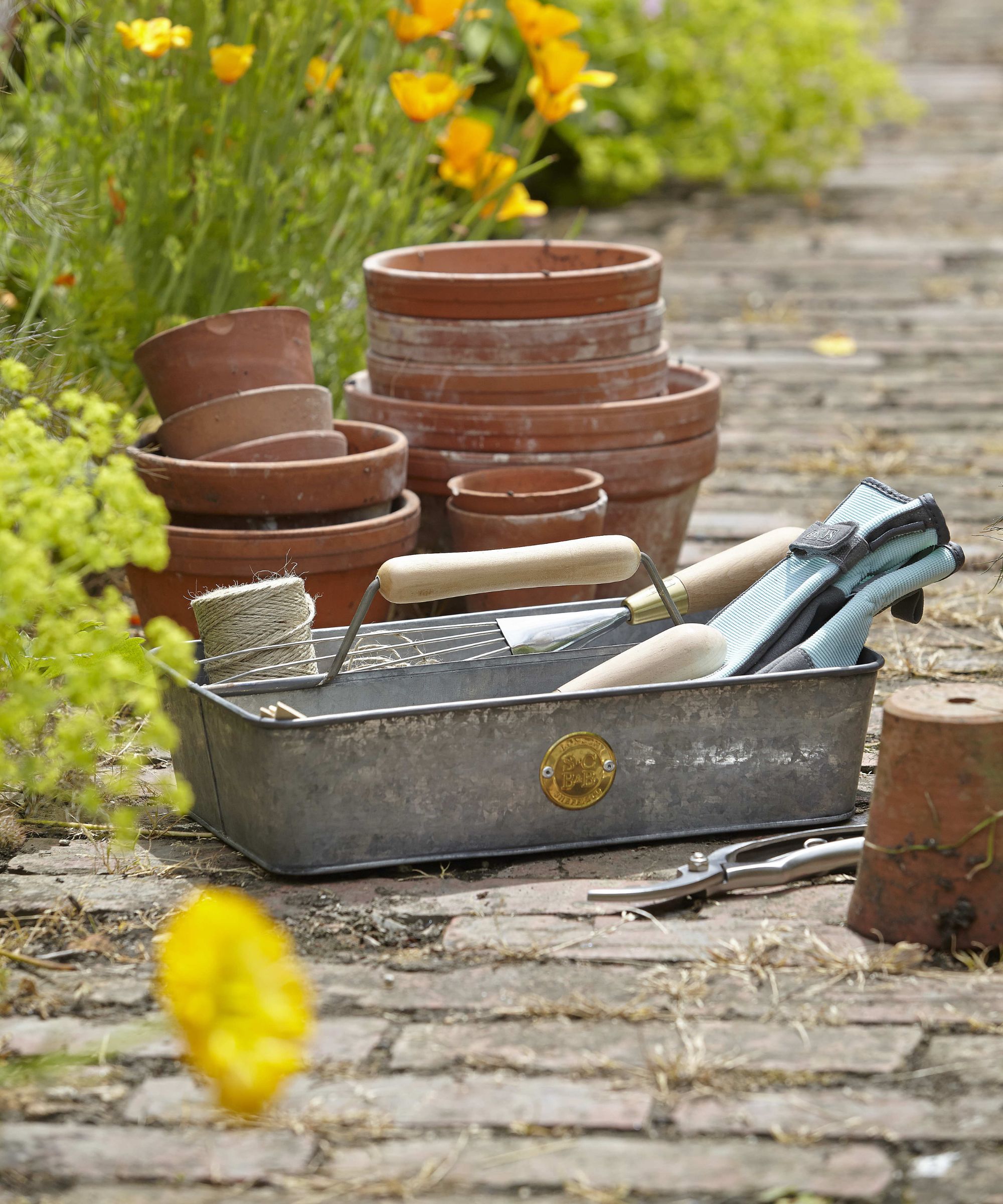
There's nothing more frustrating than not being able to find the gardening tool you need when you need it, so it's worth having a couple of caddies for your gardening essentials.
A caddy is also useful for transporting things around, from gloves and secateurs to pots, seeds, and labels, and means you're less likely to waste time going back and forth. We love this enamel gardening trug, at Walmart for keeping everything in one place.
FAQs
Does a potting shed have to face south?
If you can, position your potting shed so that the windows face south, as this will give the plants the most exposure to sunlight during the day. The key is to avoid having it face north, which will be the coldest and darkest position.
Don't forget to do some backyard decluttering at the end of each season, and try to keep on top of tidying – treating the potting shed like any other area of the home. It's the 'eat your vegetables' side of gardening, but a little bit of discipline will keep your potting shed feeling like an outdoor retreat away from the noise of the rest of the house.
Sign up to the Homes & Gardens newsletter
Design expertise in your inbox – from inspiring decorating ideas and beautiful celebrity homes to practical gardening advice and shopping round-ups.

Millie Hurst is a freelance lifestyle writer with over six years of experience in digital journalism. Having previously worked as Solved Section Editor at Homes & Gardens and Senior SEO Editor at News UK in London and New York, Millie has written for an array of homes brands including Livingetc and Real Homes and was formerly Senior Content Editor at Ideal Home. She has written and edited countless features on home organization, decluttering and interior design and always hopes to inspire readers with new ways to enjoy their homes. She loves to weave nature-inspired decor and nods to time spent in Italy into her own home.
-
 Plants never to grow next to fruit trees
Plants never to grow next to fruit treesExpert advice on which plants to keep away from fruit trees to encourage a healthy harvest
By Jacky Parker Published
-
 Martha Stewart's tips for arranging daffodils are unbelievably simple and effective – it's the only flower advice you need this springtime
Martha Stewart's tips for arranging daffodils are unbelievably simple and effective – it's the only flower advice you need this springtimeMartha shows us that we can create gorgeous bouquets of this seasonal flower by simply trimming the stems and placing them in specific vases
By Hannah Ziegler Published

